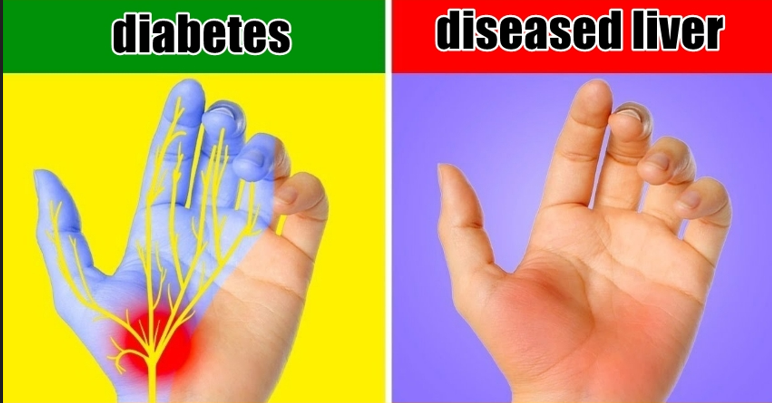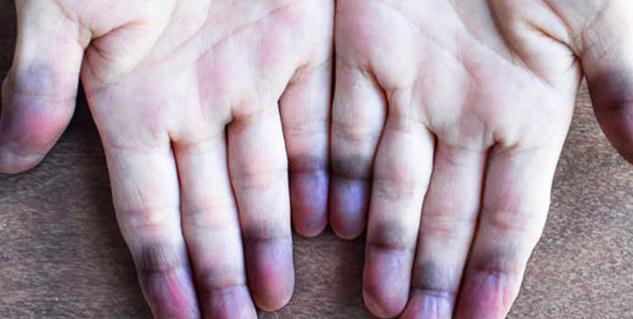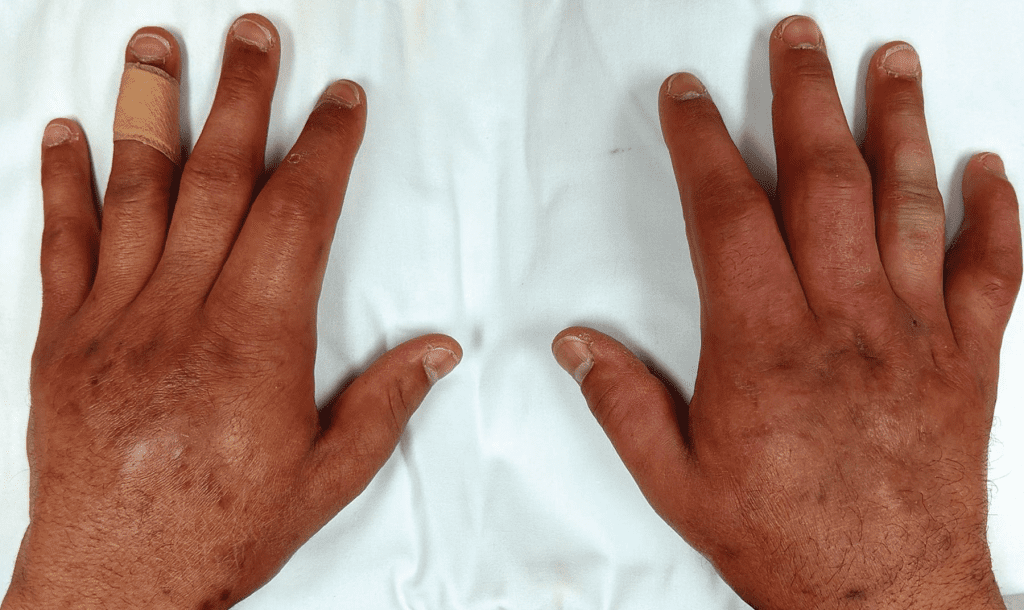Our bodies often provide subtle signals about our health, and our hands are no exception. From the condition of our nails to the way we grip, our hands can be a window into underlying health issues. Learning to recognize these signs can help in early detection and prevention of serious health conditions. Let’s explore how different aspects of your hands can reveal valuable insights into your overall health.
Early Signs of Parkinson’s Disease: Tiny Handwriting and Tremors

One of the earliest signs of Parkinson’s disease can show up in something as simple as handwriting. Known as micrographia, people with Parkinson’s may start to write with cramped, small letters, which could be due to a loss of finger dexterity or changes in vision. Another classic symptom of Parkinson’s is hand tremors—shaking that occurs either at rest or during movement. These tremors are a common sign of the neurodegenerative disorder, which progressively affects motor function.
If you or someone you know is experiencing persistent hand tremors or noticeable changes in handwriting, it’s essential to consult with a healthcare professional. Early detection can make a significant difference in managing Parkinson’s disease effectively.
Kidney Health Indicators: What Your Nails Are Telling You
Your nails can serve as an important indicator of kidney health. For instance, vertical stripes on the nails, concave or spoon-shaped nails, and nails with white spots or a white lower half can point to potential kidney issues or iron deficiencies.
- Vertical stripes: These may signal poor kidney function or even liver issues.
- Concave nails: This is often associated with iron-deficiency anemia.
- White spots: These could be related to underlying kidney problems.
If you notice any significant or persistent changes in your nails, it’s worth having a medical professional evaluate your kidney function.
Heart Disease Warning Signs: Grip Strength and Nail Changes
Your hands can also offer early warnings about potential heart disease. Weak grip strength has been linked to an increased risk of cardiovascular disease. Research has shown that people with a weaker grip tend to have higher rates of heart disease and overall mortality.
Another fascinating indicator is found in fingerprint patterns. Studies have shown that individuals with a spiraled fingerprint pattern are more likely to develop high blood pressure. Thickened fingertips or nails that start to lift away from the nail bed can also be a warning sign of heart problems, including heart failure or other circulatory issues.
If you notice any of these symptoms, especially in combination with other risk factors for heart disease, it’s wise to consult with a healthcare provider for further evaluation.
Arthritis Risk: Your Finger Length Could Hold the Answer

Believe it or not, the length of your fingers could indicate your risk of developing osteoarthritis. Research published in Arthritis & Rheumatism has shown that individuals with a longer ring finger compared to their index finger have a higher likelihood of developing arthritis.
In women, having a ring finger longer than the index finger can triple the risk of developing osteoarthritis, a degenerative joint disease that causes pain and stiffness. While finger length alone isn’t a definitive diagnostic tool, it’s an interesting factor that could motivate you to be more proactive in managing your joint health.
Liver Health: Red Palms and What They Mean
A condition called palmar erythema, or red palms, can sometimes indicate liver disease. Reddened palms may result from cirrhosis, a form of liver damage, but it can also be caused by hormonal changes, rheumatoid arthritis, or even pregnancy.
Don’t panic if you notice red palms, as this condition can also be inherited and may not always be related to serious liver problems. However, if you’re concerned about your liver health, it’s always advisable to consult a healthcare professional for a proper diagnosis.
Cyanosis: Blue Fingers and Oxygen Levels

Cyanosis is a condition where the skin, particularly in the fingertips, takes on a bluish hue due to a lack of oxygen in the blood. This symptom can signal serious underlying issues such as pneumonia, asthma, or heart disease.
If you notice your fingers turning blue along with other symptoms like shortness of breath or chest pain, it could be a sign of a medical emergency, such as a heart attack. In such cases, seek immediate medical attention to ensure proper diagnosis and treatment.
Hypothyroidism: Swollen Fingers and Joint Pain
Swollen joints and puffy fingers could be signs of hypothyroidism, a condition in which the thyroid gland doesn’t produce enough thyroid hormones. People with hypothyroidism may also experience carpal tunnel syndrome, which can cause numbness, tingling, and pain in the hands.

If you have persistent swelling in your fingers along with symptoms like fatigue, weight gain, or cold intolerance, it might be time to have your thyroid checked by a healthcare provider. Treating hypothyroidism early can prevent complications and improve your quality of life.
Conclusion: What Your Hands Say About Your Health
Your hands are more than just tools for daily tasks—they can be a powerful reflection of your internal health. From early signs of neurodegenerative diseases like Parkinson’s to potential indicators of heart and kidney problems, your hands and nails can offer valuable clues that should not be overlooked.
If you start noticing any changes in the appearance of your hands, nails, or grip strength, or if you experience persistent symptoms like tremors or swelling, it’s crucial to consult with a healthcare professional. Timely medical evaluation and intervention can make a big difference in catching and managing serious health conditions before they become life-threatening.


